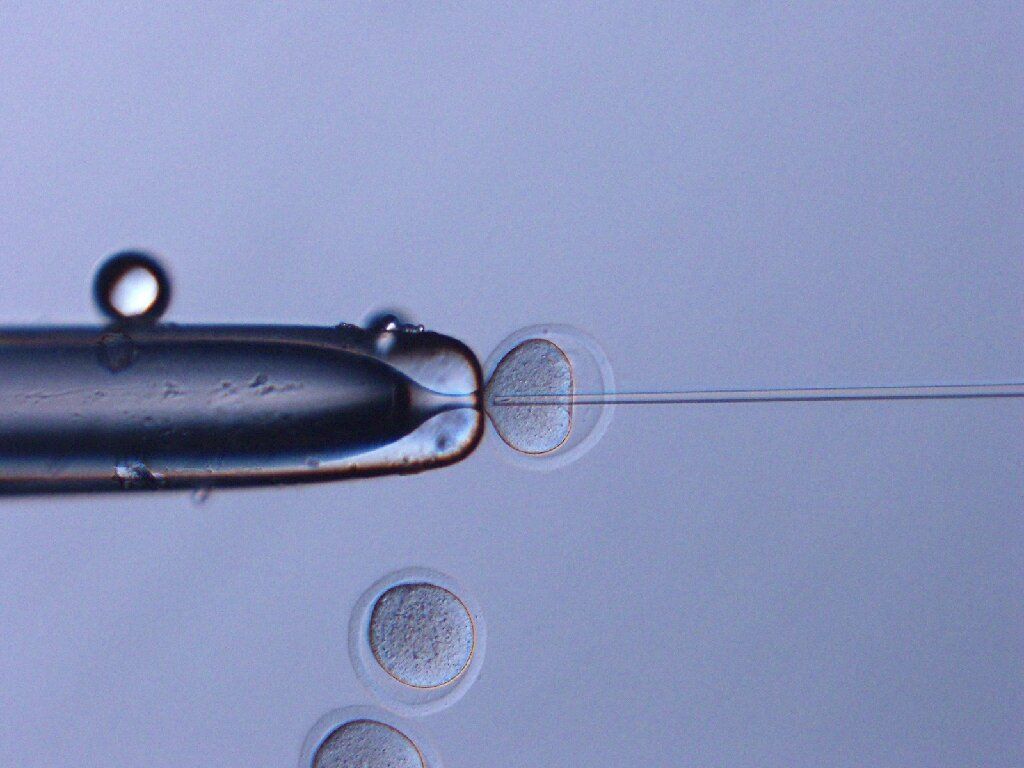After a Six-Year Sojourn in Space, Freeze-Dried Mice Sperm Produce Healthy Pups
Scientists say the finding supports the idea that genetic material can be shipped to other worlds to help establish a diversity of life
/https://tf-cmsv2-smithsonianmag-media.s3.amazonaws.com/filer/93/3e/933ed4ed-5457-4afe-b89a-f9736a548016/this-september-11-2020.jpg)
Biologist Teruhiko Wakayama envisions that one day, humans could populate other planets and seed new civilizations with animal sperm and egg cells they bring from Earth. Expanding humanity’s footprint into deep space will necessitate that humans ship out “Noah’s Arks” of this genetic material, each batch of cells a delegate of Earth’s biodiversity.
But before Wakayama’s vision becomes reality, first comes the task of verifying that reproductive cells can survive long journeys through space. Outside of Earth’s magnetic shield, radiation is 50 to several thousand times higher than back on Earth, and it can potentially damage cellular DNA. Now, Wakayama’s latest research, published this June in Science Advances, has made a promising inroad into prepping genetic material for interstellar transport: His team has found that mice sperm can indeed stay viable in space aboard the International Space Station (ISS) for up to six years—if they are freeze-dried beforehand.
“It's a very interesting paper,” says Ulrike Luderer, a reproductive toxicologist at University of California, Irvine who wasn’t involved in the study. “It's the first time that any form of mammalian sperm have been in space for that length of time—nearly six years, the longest exposure.”
To carry out the freeze-drying process, the researchers froze sperm from 65 mice with liquid nitrogen at a temperature of negative 320 degrees Fahrenheit. Then, they exposed their frozen cells to a vacuum environment to quickly remove all water.
“The sperm became powder [resembling] instant coffee,” writes Wakayama, who researches at Japan’s University of Yamanashi.
The researchers sent the freeze-dried sperm from a dozen mice to the ISS on August 4, 2013. The cells returned from their extraterrestrial rendezvous in three separate batches: after one year, three years and six years. Once back on Earth, the space-faring sperm were rehydrated. Wakayama writes, “…just add water. No need to wait three minutes (not like cup noodles).”
The researchers then used the sperm to fertilize female egg cells, which were transferred into female mice to carry to term. Although the sperm cells sustained some DNA damage, they still gave rise to healthy pups with normal gene activity. Some of these pups born from space faring sperm were mated, and they also gave birth to healthy progeny themselves.

Luderer says that she would have liked to see more tests run on the second-generation pups, especially to gauge their behavior, lifespan and internal tissues. Still, the researchers’ multi-generational demonstration is pretty compelling, she says.
The key to the radiation tolerance of the freeze-dried sperm is the elimination of water. Radiation splits water molecules into unstable radicals that wreak chemical havoc inside a cell. The lack of water allowed the freeze-dried sperm to keep far better than fresh, water-filled sperm under hefty radiation.
To measure the limits of radiation tolerance, Wakayama’s team also blasted freeze-dried mice sperm with X-rays on Earth. The sperm could withstand up to 30 Grays of radiation, the equivalent of 150 full-body CT scans, and still stay fertile, the researchers found.
“Based on the results, we were able to predict that sperm can be preserved [for] at least 200 years on ISS,” writes Wakayama, although he notes that X-rays produced in ground-based labs are different from the types of energetic particles in deep space, so the figure is a rough estimate.
The ISS sits on the fringe of Earth’s magnetic protection, so it’s still shielded from the brunt of deep space’s radiation. Although Wakayama’s team show that freeze-dried mice sperm are useable up to six years on the ISS—and possibly 200 years—they recognize that the shelf life may not be as long if the sperm were sent to and preserved in deep space. And a one-way trip to say, the edge of our solar system would take about a decade. Still, freeze-drying mice sperm increases their radioresistance by ten-fold, which is a promising result, says Wakayama.
He also adds that freeze-dried cells have another advantage—an unprecedentedly low cost of storage and transport, given that the cells can be kept at room temperature. When the time comes for humanity to transport freeze-dried cells through space, no special maintenance will be required by the astronauts crewing the vessels.
Encouraging as they are, Wakayama’s team’s findings on mice sperm may be not speak much for other plants, animals or microorganisms, says Nicolas Foray, a radiobiologist at the French Institute of Health and Medical Research who didn’t participate in the study. Mice sperm and DNA may withstand radiation better than sperm from other organisms, and he says that that’s especially the case for humans. “You will certainly not have the same story with yeast or with humans,” he says.
Deep space travel is a lofty goal because biology on Earth in general is simply not adapted for the hostile environment of space. But that hasn’t stopped scientists from forging ahead with ambitious plans. Wakayama writes he already has his sights set on conducting similar experiments on Gateway, humanity’s first lunar outpost in the works under NASA’s Artemis program, which will pave the way for more deep space exploration endeavors.
/https://tf-cmsv2-smithsonianmag-media.s3.amazonaws.com/accounts/headshot/kim.png)
/https://tf-cmsv2-smithsonianmag-media.s3.amazonaws.com/accounts/headshot/kim.png)